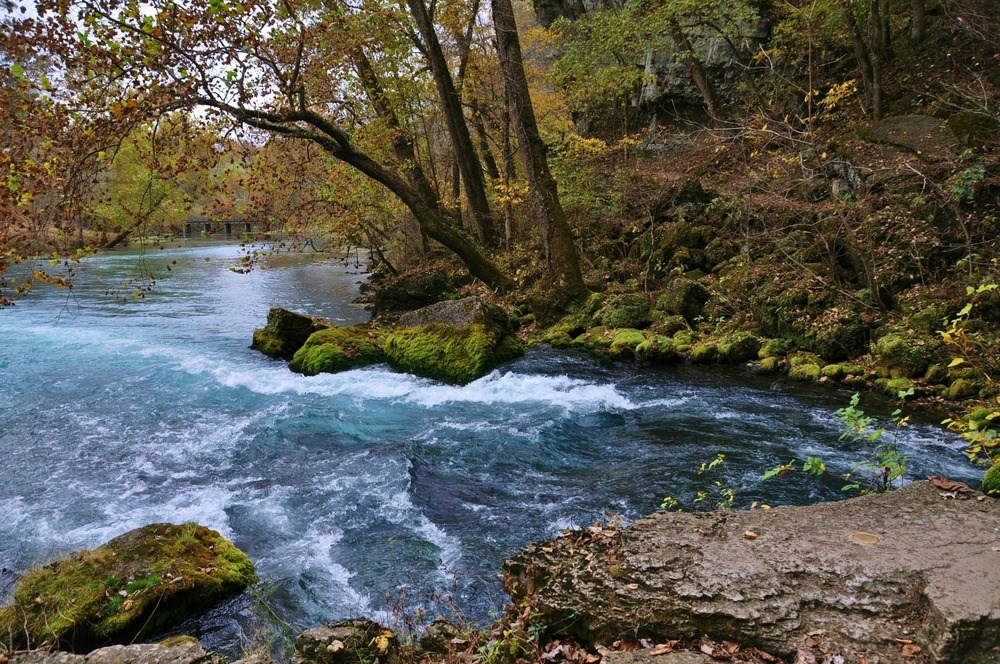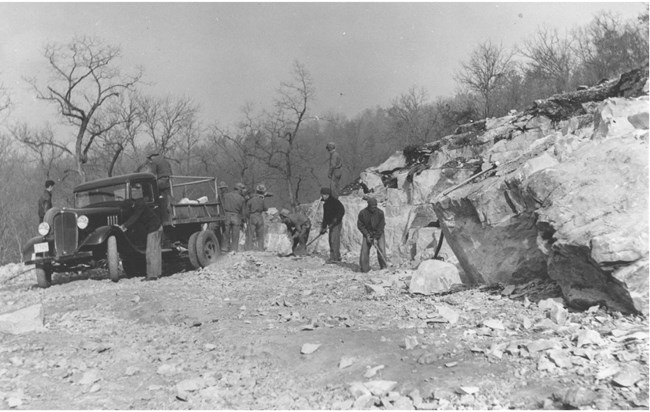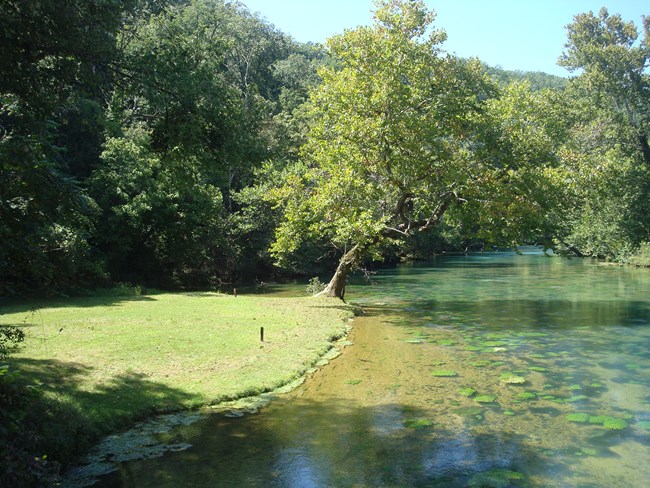Last updated: January 23, 2020
Article
Big Spring Historic District Cultural Landscape

NPS / Patty Wheatley-Bishop
Much of the work undertaken during the period of significance, from 1924 to 1969, was administered through public work programs. First, the Civilian Conservation Corps (CCC) and, later, the Works Progress Administration (WPA) added cabins, fire towers, picnic shelters, pavilions, trails, roads, an Entrance Building and State Park Museum Building. Like other cultural landscapes developed under public work projects, the structures exemplify rustic architecture and use materials including “wood frame timbers and course cut dolomite.” The rustic architecture and naturalistic landscape design sought to subordinate development to the natural features.
Landscape Description
The Big Spring Historic District, located in southeast Missouri, is largely characterized by steep slopes and valleys. The topography is largely defined by the Current River and its floodplain, and Big Spring and Big Spring branch. Mark Twain National Forest borders the site to the west and southwest. An undeveloped area also exists within the district and was originally used as a wildlife game refuge.
NPS / OZAR Archives
Other contributing features include those directly associated with CCC use. These include the largely non-extant camp ruins, dump, fire/lookout tower, and rock quarries. At the rock quarries CCC workers mined for limestone blocks used in construction.
Historic Use
Following the start of Missouri’s state park program in 1919, Alley Spring, Round Spring, and Big Spring became the first established parks in 1924. At the time, the Big Spring State Park was the largest in Missouri.
NPS
The state park was intended to contain both a visitor use area and primitive backcountry area for wildlife populations. Soon after acquisition, the state designated the southern portion of the park as a game refuge. However, the state lacked funds to develop the park for recreational use and work to develop the state park did not begin until 1933.
In 1933, Congress passed a law forming the CCC in response to the unemployment crisis. Under the CCC program, John Warren Teasdale and architect Donald A. Blake supervised the landscape design and architecture. CCC Company 1710 began work at Big Springs State Park the same year. Initially, the CCC focused on making improvements related to fire prevention and flood control. They then built several cabins, a comfort station, and Big Spring Lodge for visitor use. CCC work completed in 1938 and WPA workers arrived and completed five frame cabins.
Big Spring Picnic Shelter (HS-496)


Left image
The open-sided Picnic Shelter (HS-496) being used for a picnic (date unknown).
Credit: NPS / OZAR Archives
Right image
Big Spring Picnic Shelter in 2013.
Credit: NPS
Quick Facts
- Cultural Landscape Type: Historic Designed Landscape
- National Register Significance Level: State
- National Register Significance Criteria: A, C
- Period of Significance: 1924-1969

